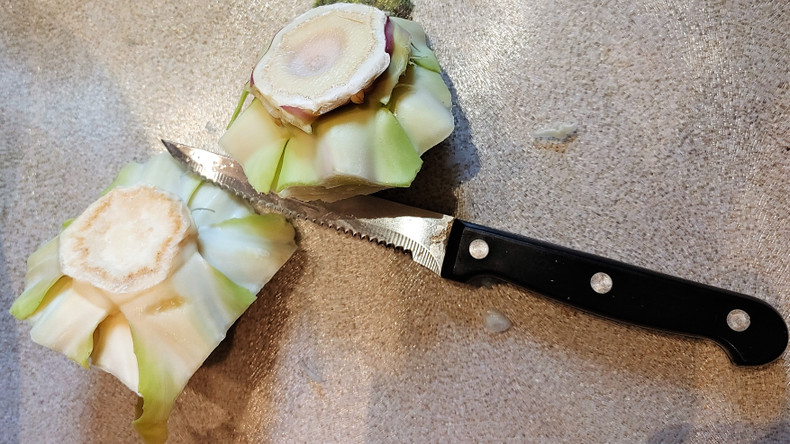- Cabbage core: When making sauerkraut or any other ferment that uses cabbage, place the cabbage core on top of the vegetables inside the jar and push the veggies under the brine.
- Brine: Cabbage is naturally juicy and perfectly capable of producing its own brine without extra water. Shred it in the food processor (using the the disc with the coarse holes).
- Headspace: Leave some headspace for the mixture to expand.
- Leaks: Place the jar in another container in case the brine leaks out.
- Cover: If you use a see-through jar, cover it with a towel and secure with an elastic band to provide the darkness the bacteria like and keep out dust and contaminants.
- Spread out: If you ferment several different things at the same time (for example, sauerkraut + sourdough), keep them away from each other. Fermentation microorganisms don't like competition.
- Metal: Fermentation produces acidity. Metal and acidity don't like each other. That said, the metal used in utensils and food-grade lids is most probably acid-resistant, and the utensil is not going to touch the ferment for very long. Metal lids can be used provided that they are acid-resistant and do not directly touch the ferment for an extended period. Opt for the type with a waxy, uncorroded interior. Make sure the jar is not full to the top, to avoid direct contact with the lid. There's no problem using stainless steel while preparing the vegetables.
- Smell: A few days into the fermentation your jar may emit an odor not unlike compost. This is a natural stage where the good bacteria start transforming the vegetables into sauerkraut. The smell will subside once the veggies have matured. In their essence, fermentation and compostation are similar processes, with the difference that fermentation is performed in a controlled environment and produces an amazing superfood.
- Brown layer: Remove the brownish layer at the top of the jar, if there is one. This layer was not submerged under the brine. As a result, it is not properly fermented. Underneath it lies your true treasure -- a tangy, lovely, sauerkraut, ready to be dug in.


Making sauerkraut?
Homemade sauerkraut is a nutritious, flavorful, extraordinary superfood.
We have assembled a few tips to help you ferment your own sauerkraut:
Boost your ferment! Make nutritious fermented vegetables at home with our fermentation starter culture



